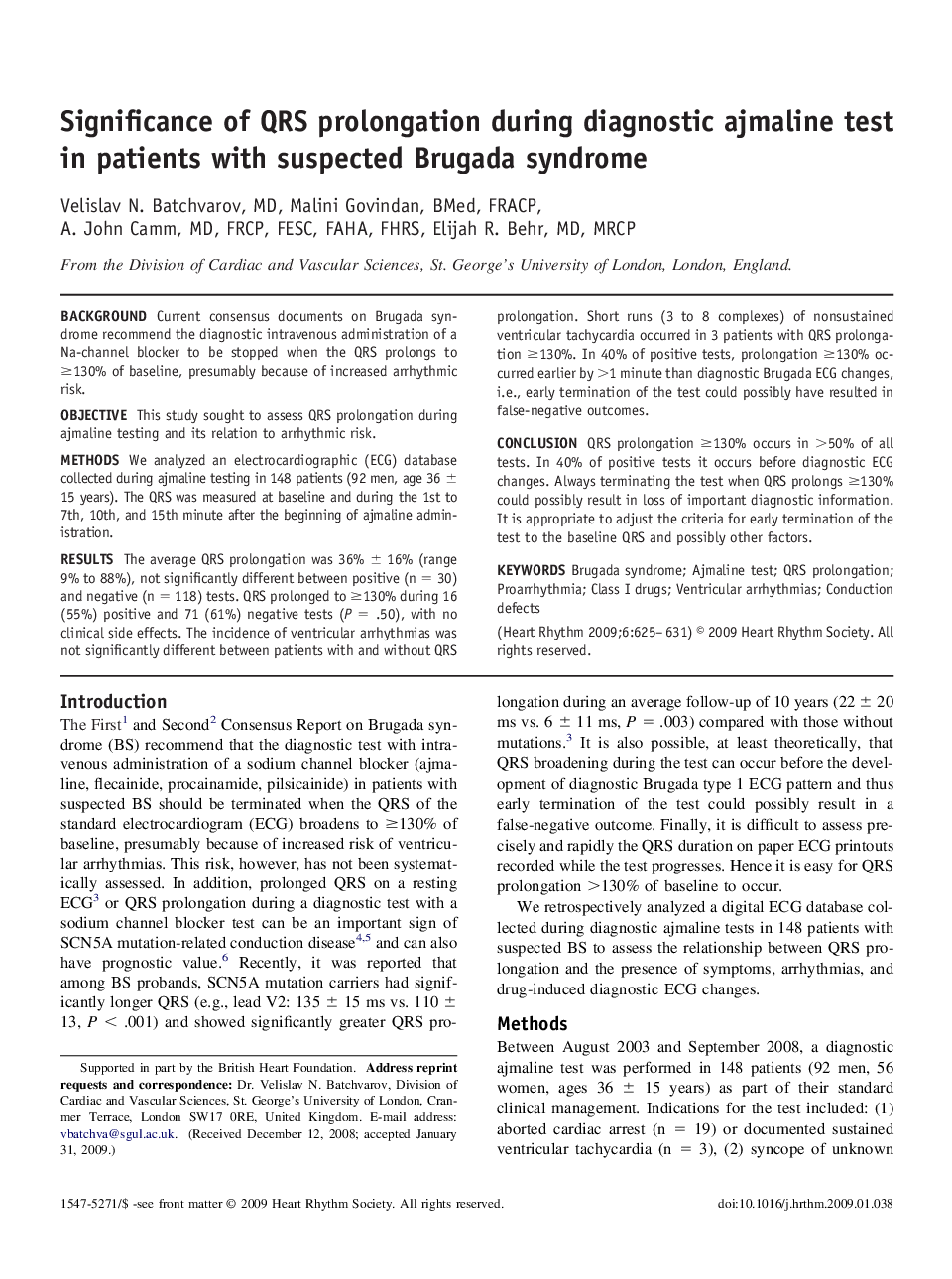| Article ID | Journal | Published Year | Pages | File Type |
|---|---|---|---|---|
| 2923642 | Heart Rhythm | 2009 | 7 Pages |
BackgroundCurrent consensus documents on Brugada syndrome recommend the diagnostic intravenous administration of a Na-channel blocker to be stopped when the QRS prolongs to ≥130% of baseline, presumably because of increased arrhythmic risk.ObjectiveThis study sought to assess QRS prolongation during ajmaline testing and its relation to arrhythmic risk.MethodsWe analyzed an electrocardiographic (ECG) database collected during ajmaline testing in 148 patients (92 men, age 36 ± 15 years). The QRS was measured at baseline and during the 1st to 7th, 10th, and 15th minute after the beginning of ajmaline administration.ResultsThe average QRS prolongation was 36% ± 16% (range 9% to 88%), not significantly different between positive (n = 30) and negative (n = 118) tests. QRS prolonged to ≥130% during 16 (55%) positive and 71 (61%) negative tests (P = .50), with no clinical side effects. The incidence of ventricular arrhythmias was not significantly different between patients with and without QRS prolongation. Short runs (3 to 8 complexes) of nonsustained ventricular tachycardia occurred in 3 patients with QRS prolongation ≥130%. In 40% of positive tests, prolongation ≥130% occurred earlier by >1 minute than diagnostic Brugada ECG changes, i.e., early termination of the test could possibly have resulted in false-negative outcomes.ConclusionQRS prolongation ≥130% occurs in >50% of all tests. In 40% of positive tests it occurs before diagnostic ECG changes. Always terminating the test when QRS prolongs ≥130% could possibly result in loss of important diagnostic information. It is appropriate to adjust the criteria for early termination of the test to the baseline QRS and possibly other factors.
